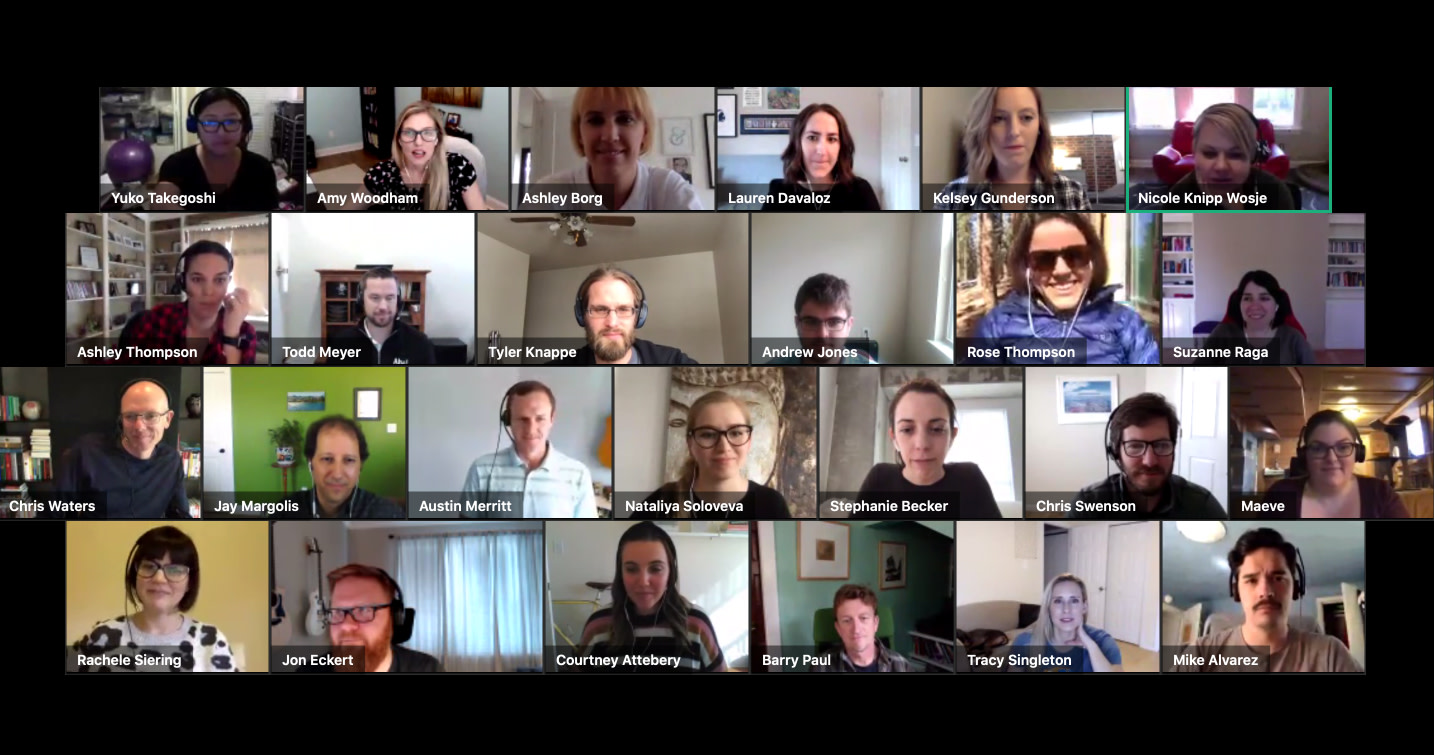
4 major transformations that happen when companies shift to remote work
“We need a better way to work.” Our team at Aha! frequently hears this from folks looking for a tool to support strategic planning. The desire to streamline processes is often a natural outcome of an internal business transformation. Most of the time, these transformations are spurred by dynamic markets and evolving customer needs. But I believe another fundamental shift is underway — this time driven by a global challenge.
This is a new type of company transformation that many organizations have no choice but to embrace right now.
I am talking about remote work. Challenging world events have thrust millions of people out of the office and many are now working from home for the first time. Companies that never even had a remote policy are being forced to quickly establish guidelines, rethink workflows, and give their employees more trust and autonomy than ever before.
Of course, not all companies and industries are able to shift entirely to a virtual setting. But many organizations are able to continue operating remotely. While it is difficult to predict when offices will reopen, forward-thinking company leaders are deciding to rapidly adapt rather than wait and see. There is no time to hesitate.
As more and more people work from home, leaders are seeing the real business benefits that come with it.
The first thing most notice is the cost savings. Expensive trips to visit clients and customers are no more. Arena conferences are shifting to virtual events. And I will bet that company leaders are beginning to wonder if these expenses (including office space) were really necessary — or just “the way things are done.”
But there is actually a bigger benefit once you get past the superficial. Removing the distractions of a co-located office environment leads to a huge increase in productivity for individuals and teams. Cutting out commutes tends to make people happier too. They can spend more time doing what they enjoy with the people they love.
Our team at Aha! understands what it takes to be a successful distributed company. We know that it is possible to connect meaningfully with teammates and customers without being in person because we do it every day. But our company has been entirely distributed since we started in 2013. Avoiding the cost and distraction of co-located work has always been important to us. And being 100 percent remote also means that we can hire the best talent no matter where they live.
Now is the time to embrace remote work — not just for today’s new reality, but for always. The shift will require leaders to challenge outdated thinking and to take action fast. Here are the four main areas of change to pay attention to:
People Before: We hire the best people in our area.
New reality: The best of the best cannot possibly all live within a specific 40 mile radius. And paying relocation costs is not ideal. To stay competitive and find real talent, you need to consider candidates based on skills and experience — not location.
Take action: If you are a company leader, document the organization’s values and the skills required to thrive. Then build a hiring program that reflects those at every stage so you can quickly identify standout candidates. Implement a meaningful onboarding program, establish internal coaching programs, and create touchpoints for team building.
Process Before: In-person interaction is a must for getting work done.
New reality: You do not need to be co-located to collaborate, forge connections, and deliver value. Colleagues and customers expect you to be accessible and responsive at all times.
Take action: Roadmapping gives the team a clear course to follow. Ensure you have a strategic plan that lays out what the company is trying to achieve, why it is important, and when the work will be completed. Then share that plan with the team so everyone is aligned around what matters most.
Customers Before: Serving customers requires travel, networking, and splashy events.
New reality: Your customers cannot always meet in person either. But they still expect you to deliver new experiences and stellar support — no matter where they are.
Take action: Use an on-demand approach deliver value to more people faster. For example, you can solicit feedback via an ideas portal and offer live online tutorials to help with adoption of new functionality.
Innovation Before: Great ideas occur when everyone is in the same room.
New reality: Innovation and business growth are not and cannot be dependent upon location. It is possible to generate ambitious ideas regardless of how far away you are from the rest of the team.
Take action: Transparency and frequent communication are key — the team needs to understand business objectives and see exactly how the work supports them. Schedule recurring virtual meetings and encourage knowledge sharing to keep everyone connected and focused on making progress.
A remote work transformation requires thought, effort, and commitment — the entire organization must work together in new ways.
This is a shift in mindset. Going remote forces you to question your assumptions about why and how your organization functions the way it does. You have to get clarity around goals, rethink how you use your time, and reframe what it means to lead and serve.
When you get it right, everyone has a blueprint for how to collaborate effectively — no in-person interactions necessary. It might not be easy at first. But the remote work transformation has already begun.
How has working from home changed the way your team works?
Aha! is a fully distributed team and we are hiring. See current openings.



